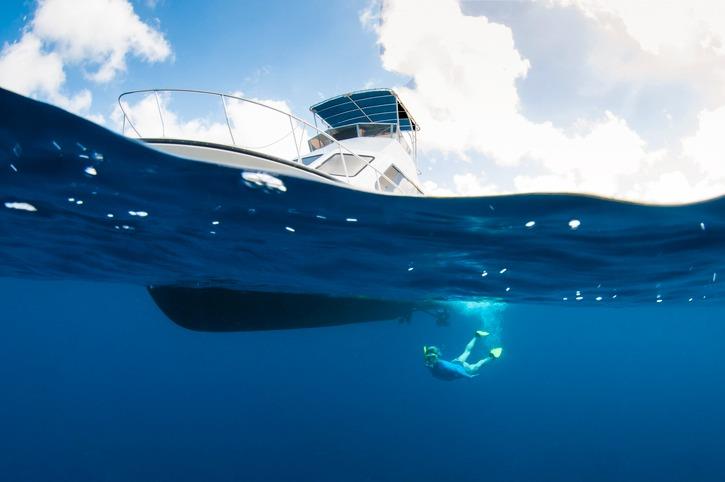
‘Hull grooming' - a new mindset for owners of moored boats that's catching on
by From Clean Below? Good to Go 5 Feb 00:34 NZDT

Boat owners on average spend $2755 annually on hull grooming © Marine Pests NZ
If your boat lives full time in the water, you might have heard the term ‘hull grooming’ - an approach that’s catching on within the maritime community
A recently released report* shows that boat owners spend an average of $2,755, and more than twenty hours of their time, annually on hull cleaning and antifouling, and that 84% of owners support the idea that maintaining a high standard of hull cleanliness is worthwhile.
It’s a diligent mindset approach to boat maintenance that essentially gives marine pests little or no chance of getting established on your hull or niche areas (e.g. prop, intakes, and the bottom of the keel bulb).
Hull grooming involves:
- Regularly checking the hull and all submerged surfaces
- Regular antifouling according to manufacturer’s instructions - this includes careful preparation before application
- Cleaning whenever the boat has or is approaching more than a light slime layer, or Level of Fouling 2 (see below)
- Paying special attention to niche areas including props, intakes, and the bottom of the keel bulb. Check with your haul-out that they will ensure that strops/chocks are moved to allow for a full clean and antifoul application.
As well as ensuring your boat is free of marine pests, hull grooming means maximum performance - perhaps pointing a few degrees higher for a sailboat or getting better fuel efficiency when under motor power.
Many regions now use a scale to measure biofouling. The Level of Fouling (LoF) scale is now in wide use throughout New Zealand and even being adopted overseas.
It was developed to assist with measuring how much fouling is on a particular boat, to help authorities and marinas assess in a consistent way if a boat poses a marine biosecurity risk.
Today, several councils, including Northland Regional Council, Auckland Council and Bay of Plenty Regional Council require boats to be at LOF 2 or less when entering their waters.
So, what does it mean? The Level of Fouling scale has six ranks, ranging from zero to five. When a vessel is inspected it is scored based on the amount of fouling visible on its submerged surfaces. You can find out more about it here
There is no one-size-fits-all approach: how often your boat is used and location-specific criteria will influence how your maintenance program looks. Generally, antifoul coatings are still our best defence against biofouling but it’s important to choose the right product. Talk to specialist paint shops and experts familiar with your geographical area about the best antifoul coating for your boat. Book space at your favourite haul-out and check the contractors and services are available well in advance to avoid missing out. More facilities now have covered sheds, so you can make use of the winter period to get work done.
* ‘Recreational boater views on hull cleanliness: insights from a national survey’ by Cawthron Institute, published December 2024